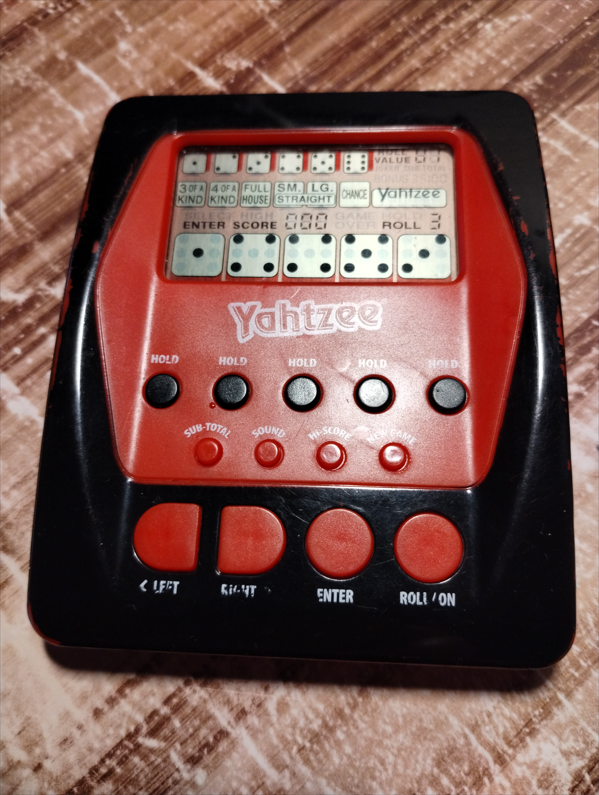|
Transylvania (video Game)
''Transylvania'' is an adventure video game published by Penguin Software. It was released for the Apple II in 1982 followed by ports to the Atari 8-bit family and Commodore 64. A Macintosh conversion was published in 1984, then versions for the Amiga, Atari ST, and MS-DOS in 1985. Plot The player is on a quest to rescue Princess Sabrina from a countryside roamed by a werewolf, a vampire, a prankster goblin, a witch, and an alien spaceship. The game has a time limit (dictated to the player by a note encountered early on that reads, "Sabrina dies at dawn"), as the Princess is trapped in a coffin in the castle tower. Reception Gregg Williams reviewed the game for ''Computer Gaming World'', and stated that "I refer to the Atari 520 ST version of Polarware's Transylvania. The story line is fine, but the game makes almost no use of the ST's extra colors, resolution, or speed." The first game in the ''Transylvania'' series was well received, appearing in the ''Billboard'' and ''Soft ... [...More Info...] [...Related Items...] OR: [Wikipedia] [Google] [Baidu] |
Penguin Software
Penguin Software was a computer software and video game publisher from Geneva, Illinois, Geneva, Illinois that produced graphics and application software and games for the Apple II, Macintosh, IBM, Commodore 64, Amiga, Atari 8-bit, and Atari ST computers. They produced the graphics programs ''Graphics Magician'' and ''Complete Graphics System'', graphic adventure games such as the ''Transylvania (computer game), Transylvania'' series, arcade-style games like ''Spy's Demise'', and role-playing video games such as ''Xyphus''. History The company was founded in 1978 by Mark Pelczarski as "MP Software" with its first product, a graphics program called ''Magic Paintbrush''. It evolved to "Co-op Software" as part of a sister company, Micro Co-op, then adopted the name "Penguin Software" in 1981 when software publishing became the primary focus. Like many other home computer publishers at the time, Penguin Software openly credited the Video game developer, developers of their games on b ... [...More Info...] [...Related Items...] OR: [Wikipedia] [Google] [Baidu] |
Coffin
A coffin is a funerary box used for viewing or keeping a corpse, either for burial or cremation. Sometimes referred to as a casket, any box in which the dead are buried is a coffin, and while a casket was originally regarded as a box for jewelry, use of the word "casket" in this sense began as a euphemism introduced by the undertaker's trade. A distinction is commonly drawn between "coffins" and "caskets", using "coffin" to refer to a tapered hexagonal or octagonal (also considered to be anthropoidal in shape) box and "casket" to refer to a rectangular box, often with a split lid used for viewing the deceased as seen in the picture. Receptacles for cremated and cremulated human ashes (sometimes called cremains) are called urns. Etymology First attested in English in 1380, the word ''coffin'' derives from the Old French , from Latin , which means ''basket'', which is the latinisation of the Greek κόφινος (''kophinos''), ''basket''. The earliest attested form of the word ... [...More Info...] [...Related Items...] OR: [Wikipedia] [Google] [Baidu] |
The Book Of Adventure Games
''The Book of Adventure Games'' is a book by Kim Schuette published in 1984 by Arrays, Inc. Contents ''The Book of Adventure Games'' is a strategy guide for 77 text adventure video games, and contains descriptions, reviews, maps, and solutions for each. Reception Allen Varney reviewed ''The Book of Adventure Games'' in ''Space Gamer Space is the boundless three-dimensional extent in which objects and events have relative position and direction. In classical physics, physical space is often conceived in three linear dimensions, although modern physicists usually consider ...'' No. 70. Varney commented that "''The Book of Adventure Games'' is worth the money to any aficionado of 'interactive fiction'." Mike Nicita and Roun Petrusha of ''Popular Computing'' commented that "frustrated players will appreciate Schuette's treatment of 77 of the best-known adventure games for its help in learning to play and enjoy them." Similarly, Russ Lockwood of ''Creative Computing'' conclude ... [...More Info...] [...Related Items...] OR: [Wikipedia] [Google] [Baidu] |
Page 6
''Page 6'' (subtitled ''Atari Users Magazine'' and later known as ''Page 6 Atari User'', then ''New Atari User'') was an independent British publication aimed at users of Atari home computers. It was published between 1982 and 1998. The magazine supported both the Atari 8-bit family and later the Atari ST models. History The magazine had its origins in the newsletter of the Birmingham User's Group, an independent Atari club based in England. Les Ellingham was appointed to be the editor of the newsletter, but decided to produce a magazine with broader appeal instead. He remained editor of ''Page 6'' throughout its entire run of 85 issues. Although subscription-only for most of its life, it was available through newsagents during the late 1980s and early 1990s. When ''Database'' ceased publication of the original ''Atari User'' magazine in 1988, ''Page 6'' bought the rights (and subscriber list), and renamed their magazine, firstly to ''Page 6 Atari User'' in February 1989 and t ... [...More Info...] [...Related Items...] OR: [Wikipedia] [Google] [Baidu] |
Electronic Games
An electronic game is a game that uses electronics to create an interactive system with which a player can play. Video games are the most common form today, and for this reason the two terms are often used interchangeably. There are other common forms of electronic game including handheld electronic games, standalone systems (e.g. pinball, slot machines, or electro-mechanical arcade games), and exclusively non-visual products (e.g. audio games). Teletype games The earliest form of computer game to achieve any degree of mainstream use was the text-based Teletype game. Teletype games lack video display screens and instead present the game to the player by printing a series of characters on paper which the player reads as it emerges from the platen. Practically this means that each action taken will require a line of paper and thus a hard-copy record of the game remains after it has been played. This naturally tends to reduce the size of the gaming universe or alternatively to requi ... [...More Info...] [...Related Items...] OR: [Wikipedia] [Google] [Baidu] |
Casus Belli (magazine)
''Casus Belli'' is a French magazine about role-playing games, published in different formats since 1980. It contains news, reviews, interviews, features, and role-playing game materials. The magazine was published by Excelsior Publications until 1999, by Arkana Press in 2000–2006, and by Casus Belli Presse in 2010–2011, and has been published by Black Book Éditions since 2011. Since 2020, it also has the online video companion ''Casus TV'', which is produced in collaboration with ''Tric Trac''. History ''Casus Belli'' has been released in different forms since 1980, originally under editor-in-chief François Marcela-Froideval and published by Excelsior Publications; for its first few issues, it was a short, black-and-white publication, before changing to a larger format printed in color. In this incarnation, it became the leading role-playing game magazine on the French market. The artists working on this edition included the cartoonist Tignous. The magazine ended publicat ... [...More Info...] [...Related Items...] OR: [Wikipedia] [Google] [Baidu] |
ANALOG Computing
''ANALOG Computing'' (an acronym for Atari Newsletter And Lots Of Games) was an American computer magazine devoted to the Atari 8-bit family of home computers. It was published from 1981 until 1989. In addition to reviews and tutorials, ''ANALOG'' printed multiple programs in each issue for users to type in. The magazine had a reputation for listings of machine language games–much smoother than those written in Atari BASIC—and which were uncommon in competing magazines. Such games were accompanied by the assembly language source code. ''ANALOG'' also sold commercial games, two books of type-in software, and access to a custom bulletin-board system. Originally the title as printed on the cover was ''A.N.A.L.O.G. 400/800 Magazine'', but by the eighth issue it changed to ''A.N.A.L.O.G. Computing''. Though the dots remained in the logo, it was simply referred to as ''ANALOG'' or ''ANALOG Computing'' inside the magazine. While the program listings were covered under the m ... [...More Info...] [...Related Items...] OR: [Wikipedia] [Google] [Baidu] |
Video (magazine)
''Video'' is a discontinued American consumer electronics magazine that was published from 1977 to 1999 by Reese Communications with a focus on video and audio devices. The magazine showcases new audiovisual products, analyzes current practices and trends in the field, and provides critical reviews of newly marketed products and equipment. During its early years, it competed fiercely with contemporary journals like ''Video Review'' and ''Video Buyer's Review''—ultimately culminating in a 1980 trademark infringement suit over use of the term "Video Buyer's Guide". In March 1995, ''Video'' was acquired from Reese by Hachette Filipacchi, and in 1999 it was merged with their bi-monthly ''Sound & Image'' magazine to become ''Sound & Vision (magazine), Sound & Vision''. Today, the legacy of ''Video'' lies in the history of video game journalism as its regular column, "Arcade Alley", represents the earliest example of a video game column in a mainstream publication. Arcade Alley is cred ... [...More Info...] [...Related Items...] OR: [Wikipedia] [Google] [Baidu] |
Arkie Awards
An electronic game is a game A game is a structured form of play (activity), play, usually undertaken for enjoyment, entertainment or fun, and sometimes used as an educational tool. Many games are also considered to be work (such as professional players of spectator s ... that uses electronics to create an interactive system with which a player can play. Video games are the most common form today, and for this reason the two terms are often used interchangeably. There are other common forms of electronic game including handheld electronic games, standalone systems (e.g. pinball, slot machines, or electro-mechanical arcade games), and exclusively non-visual products (e.g. audio games). Teletype games The earliest form of computer game to achieve any degree of mainstream use was the text-based Teleprinter, Teletype game. Teletype games lack video display screens and instead present the game to the player by printing a series of characters on paper which the player reads a ... [...More Info...] [...Related Items...] OR: [Wikipedia] [Google] [Baidu] |
The Wall Street Journal
''The Wall Street Journal'' is an American business-focused, international daily newspaper based in New York City, with international editions also available in Chinese and Japanese. The ''Journal'', along with its Asian editions, is published six days a week by Dow Jones & Company, a division of News Corp. The newspaper is published in the broadsheet format and online. The ''Journal'' has been printed continuously since its inception on July 8, 1889, by Charles Dow, Edward Jones, and Charles Bergstresser. The ''Journal'' is regarded as a newspaper of record, particularly in terms of business and financial news. The newspaper has won 38 Pulitzer Prizes, the most recent in 2019. ''The Wall Street Journal'' is one of the largest newspapers in the United States by circulation, with a circulation of about 2.834million copies (including nearly 1,829,000 digital sales) compared with ''USA Today''s 1.7million. The ''Journal'' publishes the luxury news and lifestyle magazine ' ... [...More Info...] [...Related Items...] OR: [Wikipedia] [Google] [Baidu] |



